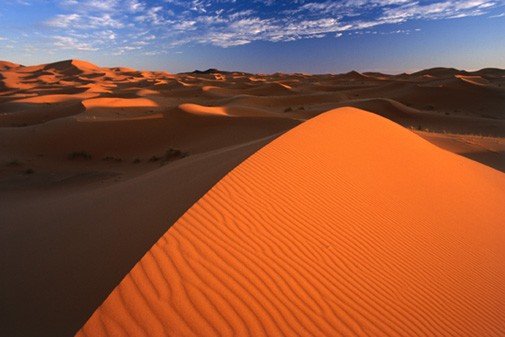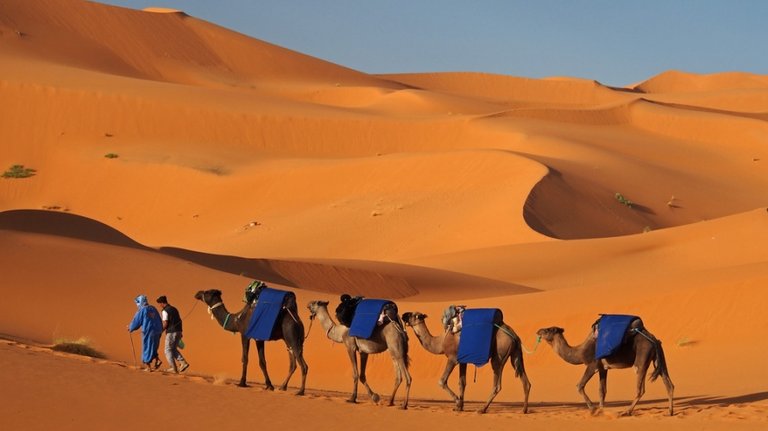
Merzouka has extensive sandy areas for visitors to treat rheumatism
In the south-eastern part of Morocco, the city of Marzouka, known as the "Sand Sea" and the "Moroccan Desert Dora", is 130 kilometers from the city of Rashidiya, which has wide sandy areas for visitors to treat rheumatism.
The Marzouka dunes extending 22 kilometers and 5 kilometers offer an opportunity to reflect on the changing colors of the sand according to the changing light of the day, especially at the top of the highest dunes in Morocco. Most of Marzouka finds simplicity in the hustle and bustle of modern life. , Especially thanks to traditional music, hospitality and other things inherited from their ancestors.
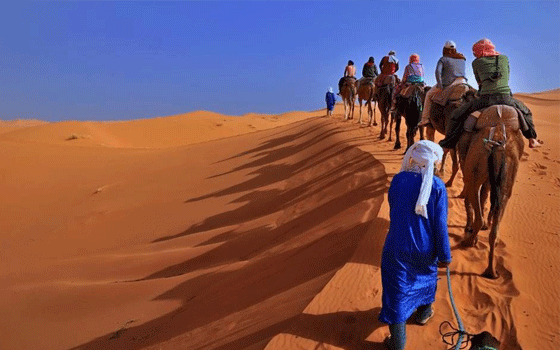
The city is accessible by road or by air. The road runs from the city of Rashidiya, which is a transit point for any traveler to the area. Due to its location and attractiveness, a direct line between Casablanca and Marzouka is operated by public transport bus during the summer .
The air route runs through the air line that started early last summer between Casablanca and Rashidiya. Upon arriving at Moulay Ali Al Sharif airport, the traveler needs to take a taxi to reach the Marzouka area.
When we look at the history of the city and its inhabitants, we discover that the area was once uninhabited and formed a crossing point for traders going to or coming from Timbuktu in Mali
Between Rashidiya and Marzouka, capture your bare eyes and the sand-breaking silence of the city. When you reach the city, which is about 20 kilometers from the Algerian border, the atmosphere and the grains of sand that mix with the air force you to put a grouper on your face so that you will not be disturbed by the sand storms that surprise you from time to time.
Sweat at sunset

When we look at the history of the city and its inhabitants, we discover that the area was once uninhabited and formed a transit point for the merchants to or from Timbuktu in Mali. They also belong to a desert group called Erq al-Shabi, with unique natural, ethnographic and historical characteristics. It formed the point of arrival of the desert trade convoys (the gold-slave trade) that linked the Mediterranean basin to sub-Saharan Africa.
In the third century AD, Sijmassa was the ancient city that became mere ruins in the town of Al-Risani, the commercial and spiritual capital of the region, and was mentioned in the writings of great travelers such as Ibn Battuta and Ayoun-Afri.
Characterized by nature as a source of tourism in terms of tourism, exploratory and sports, throughout the days of the year, tourists flock to the village seeking healing from various joints diseases

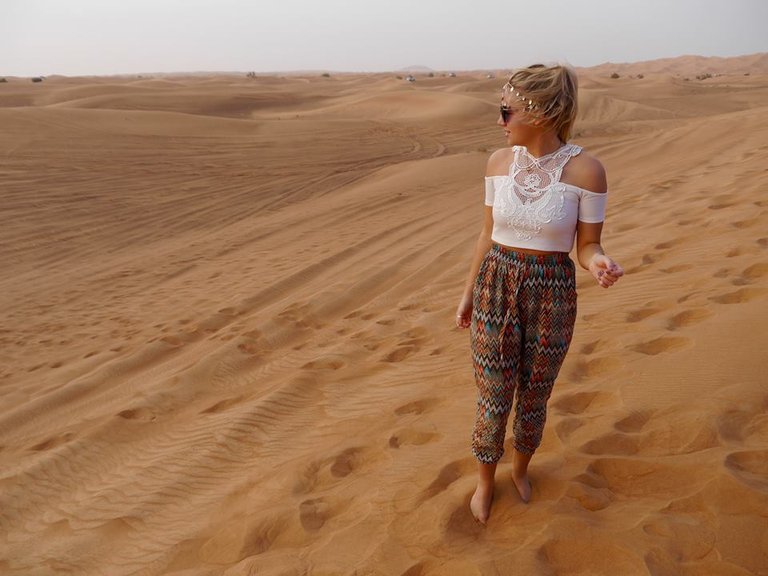
The Marzouka, which has a population of about 3000 people, is a tourist attraction frequented by a large number of tourists. In addition, the name of the bath is associated with water. Bathing in the sand, if you suffer from a disease in the joints.
Its nature is a tourist source in terms of hospital, exploratory and sports tourism, along the days of the year. Tourists flock to the village to seek healing from various diseases of the joints, in the sand dunes, which are warm and hot.
The small tents, which are similar to the clinics, are built by the people of the region who know the impact of these sand, and have earned over the years a proven therapeutic credibility that has made it a destination for thousands of Moroccans and even many countries to enjoy sand baths.
As for the details of the sand bathing, the person who wants to take a bath is completely immersed in the sand, except for his head, which is covered by a large, circular hat, known as Tarazza, similar to Mexican hats to avoid a blow to the sun.
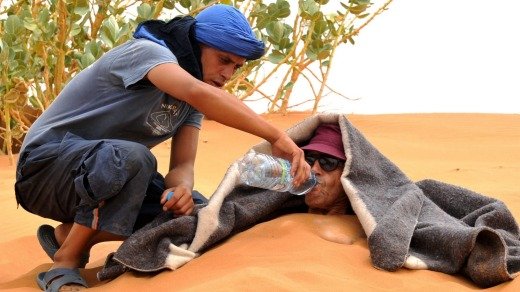
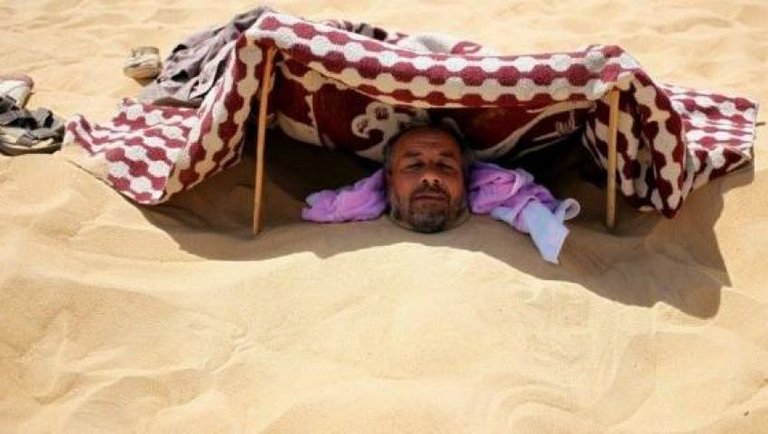 The process of landfill or so-called "bridging" lasts between 10 and 15 minutes. During this period, one of the supervisors accompanying the person benefiting from the bathing process offers a few doses of water so as not to become dehydrated by the sand absorption process.
The process of landfill or so-called "bridging" lasts between 10 and 15 minutes. During this period, one of the supervisors accompanying the person benefiting from the bathing process offers a few doses of water so as not to become dehydrated by the sand absorption process.
Prior to the process of landfill, the preparation of burial places similar to tombs, this process is done by the people of the region since the early morning, so that these drilling to get more heat from the sun and be ready to receive those who want treatment.
After spending about 15 minutes in the tent, one of the traditional bathrooms in the area goes to the spa to enjoy a hot bath in hot water.
The person who wishes to take a full shower in the sand, except for his head, which is covered by a large, circular hat, is known as "Taraza". It is similar to Mexican hats to avoid sunstroke. The landfill lasts 10 to 15 minutes.
The benefits of sand bath in rheumatism, the quality of the city's sand, its continental climate and its high temperature, helps to benefit from vitamin D, which helps to strengthen the bones, and the presence of the city in a high area of the sea 3000 meters helps visitors to benefit Of the scorching sun that provides them with an important treatment for rheumatism.
At the foot of the Marzouka Hills, a series of guesthouses and hotels of varying levels, although they offer services at affordable prices, compared with traditional tourist destinations in the Kingdom
